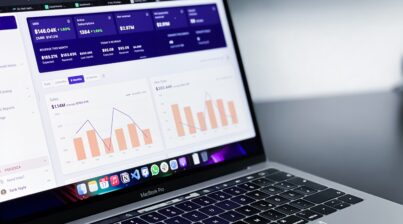When you think of workforce analytics, how does it make you feel? Overwhelmed? Confused? Or do you go to your happy place and just close the door behind you? Whatever your feeling is about analytics – we get it. In fact, so do the other HR professionals in your world. As much as HR analytics can be daunting to some and a cooling balm to others, HR analytics is not only the best way for HR teams to break the mold and give their competitors a run for their money, but also the best way to make positive changes and decisions in their organization based on data, not someone’s gut.
HR analytics can take your team from the traditional focus of collecting and tracking employee information, to a more modern, growth-centered focus of analyzing that information to help leaders and managers understand where the workforce strengths and weaknesses lie. So, what is HR analytics? Let’s explore together below.
Defining HR Analytics and its Importance
HR analytics is primarily used to create and assess insights into an organization’s workforce to determine – and even discover – the contribution of every employee towards meeting strategic objectives, generating revenue, reducing costs, and mitigating risks, to name a few. HR collects employee data and through analytics, that data is reviewed to understand what needs to be done to ensure organizational success.
When you consider that your workforce is the primary driving factor within your organization, understanding and leveraging the information that’s generated by the activity of your workforce and turning that into usable metrics helps your organization learn what works and what doesn’t across the entire employee life cycle. From there, that data can be used to drive strategies and corrections to ensure your organization’s success.
HR analytics is a critical tool to implement that helps every organization understand its strengths and weaknesses. From there, resources can be allocated to support goals, such as enhancing productivity, optimizing cash flow, increasing revenue, reducing costs, and achieving a good reputation, to name a few. If your organization is not aware of what your workforce’s capabilities and drawbacks are, you will be ill-equipped to make the right decisions and changes required to ensure your organization’s success, development, and growth.
Types of Data Collected for HR Analytics
Typically, the data processed through HR analytics comes from an HRIS that’s already in place. It’s important to ensure that the HR system you use provides metrics that direct decision-making across your organization. A critical list of HR analytics metrics that we recommend includes:
- Headcount (status, level, location, department, etc.)
- Recognition (birthdays, work anniversaries, etc.)
- Turnover (overall rate, annualized, 1st year, voluntary, involuntary, etc.)
- Retention (average tenure, by department, promotions, etc.)
- Diversity (gender, ethnicity, generation, age, etc.)
- Recruiting (open jobs, speed by hire, funnel, etc.)
- Engagement (survey questions, response rates, employer NPS, etc.)
- Performance (average rating, by department, meeting goals, etc.)
- Employer Brand (rating trends, CEO approval rating, employee recommendations, etc.)
The next step is to analyze the data points that have been collected. The analysis of your data should focus on identifying patterns and trends that can positively and negatively impact your organization over time. These insights will provide decision-makers within your organization’s current operations, determine what’s working well, and determine areas needing improvement and course correction.
There are three, typically defined methods of analysis:
- Descriptive Analytics – this is where historical data is used to understand ways operations can be advanced and optimized.
- Predictive Analytics – this is where statistical models are used to predict future risks and opportunities for growth.
- Prescriptive Analytics – this is where the forecasts gathered by Predictive Analytics are used to identify the consequences.
To learn more about these three methods of analysis, visit our blog post, “Three Types of HR Analytics” where we further describe them and provide examples of each.
HR analytics is no longer a niche practice, but rather a necessity and required for your organization to accelerate and expand. According to an Insight222 report, more than half of companies expect their HR analytics technology investment to increase in the next 18 to 24 months.
Unified Data Helps HR Professionals Understand HR Analytics
In today’s data-driven world, HR analytics are helping to guide employee talent acquisition, management development, and leadership decision-making, in organizations of varying sizes and industries. And HR analytics influence how organizations recruit, compensate, and retain their workforces. As Fast Company states, “It’s now moving from transaction to interaction” when referring to HR technology changing the way HR teams relate to their employees, managers, and leaders.
That’s why it’s important to have all your HR metrics at your fingertips in a unified manner – like an employee data dashboard. Employee Cycle offers HR professionals the ability to unify their data, from multiple HR platforms, and clearly see company-relevant data metrics in a single, unified HR data dashboard that populates real-time HR data. Create a free account and explore for yourself how HR analytics can be further defined with Employee Cycle.












